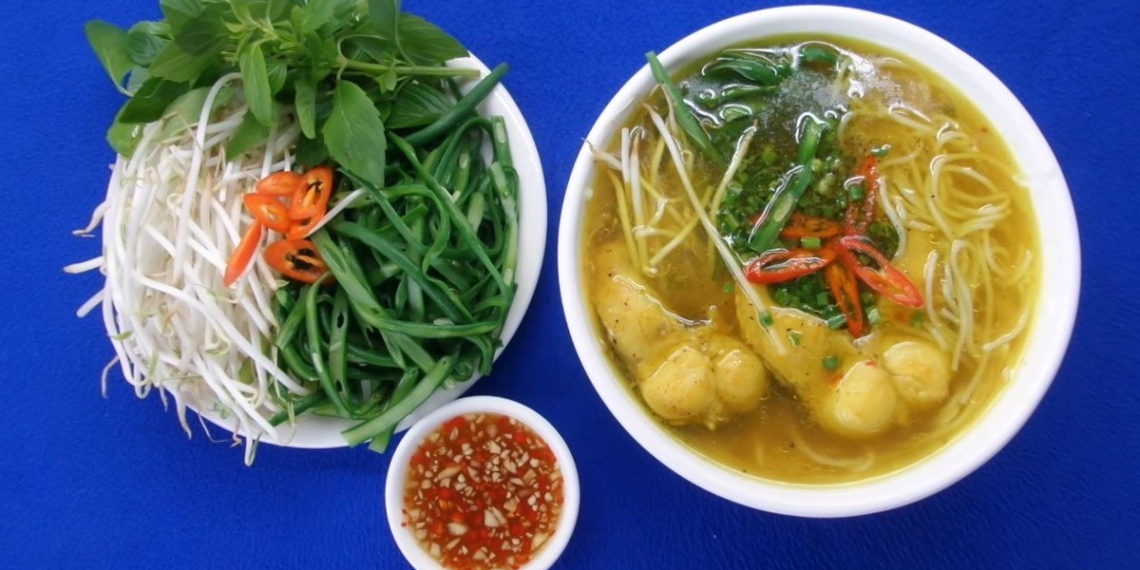Fish noodle soup is one of the soups that many people love not only for its delicious flavor but also for its nutritional value. Today, let’s learn 2 ways to cook Mekong Delta fish noodle soup to treat the whole family. What are you waiting for? Let’s get cooking right away!
1. Mekong Delta Fish Noodle Soup
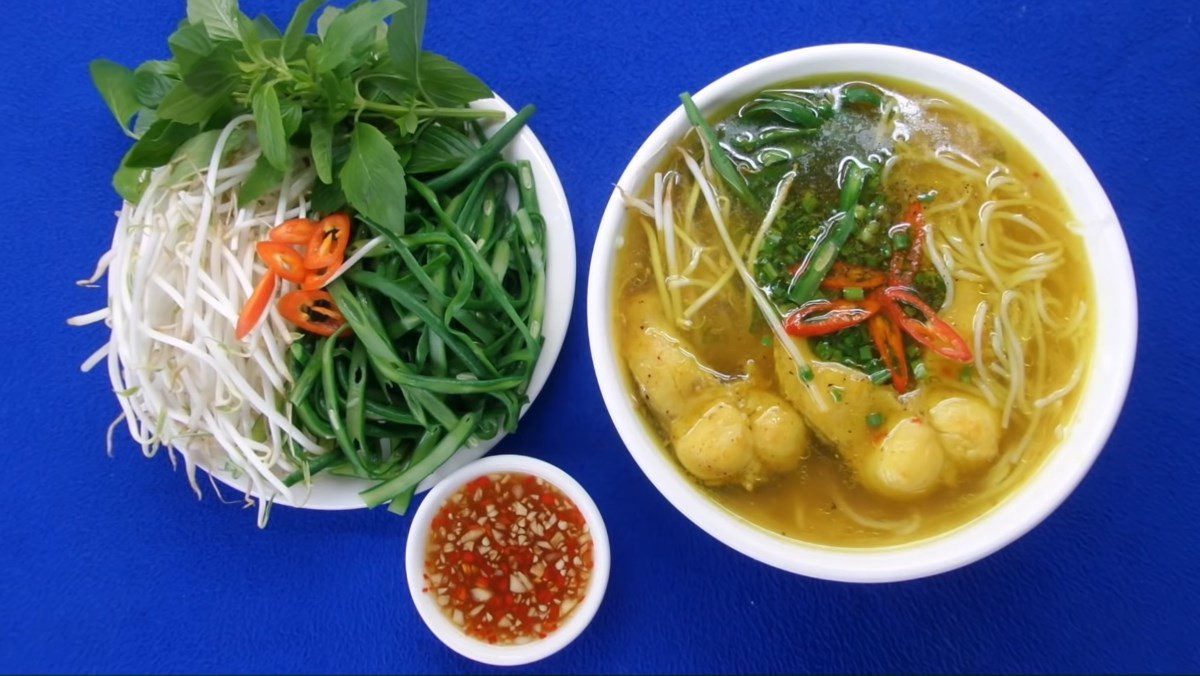
-
Preparation
20 minutes
-
Cooking
1 hour 15 minutes
-
Difficulty
Easy
Ingredients for Mekong Delta Fish Noodle Soup For 4 people
Snakehead fish 600 gr Pork bones 600 gr Fresh noodles 500 gr Turmeric 1 piece Rice paddy herb 20 gr (6 – 7 pieces) Long beans 100 gr Bean sprouts a little Thai basil a little Spring onions 2 stalks Minced shallots 1 teaspoon Minced garlic 2 teaspoons Minced chili 1 teaspoon Turmeric powder 1/2 tablespoon Shrimp paste 1 tablespoon Tamarind juice 50 gr (about 3 tablespoons) Cooking oil 3 tablespoons Fish sauce 2 tablespoons Common spices a little (salt/ sugar/ seasoning powder/ pepper)
Ingredients for Mekong Delta Fish Noodle Soup
-800x450-2.jpg)
How to make Snakehead Fish Noodle
-
Prepare and marinate snakehead fish
Buy snakehead fish, rinse it briefly, scrape off the scales, and remove the intestines. Then use coarse salt to rub all over the fish to reduce the sliminess, rinse again with clean water, and cut the fish into bite-sized pieces.
Next, place the fish in a bowl and add 1/2 tablespoon of turmeric powder, 1/2 teaspoon of pepper, 1/2 teaspoon of sugar, 1/4 teaspoon of salt, 1/2 teaspoon of seasoning powder, and 1/2 teaspoon of monosodium glutamate.
Add 1 teaspoon of minced garlic, 1 teaspoon of minced shallots, and 1/2 teaspoon of minced chili, then mix well and marinate the fish for about 30 minutes for the fish to absorb the spices.
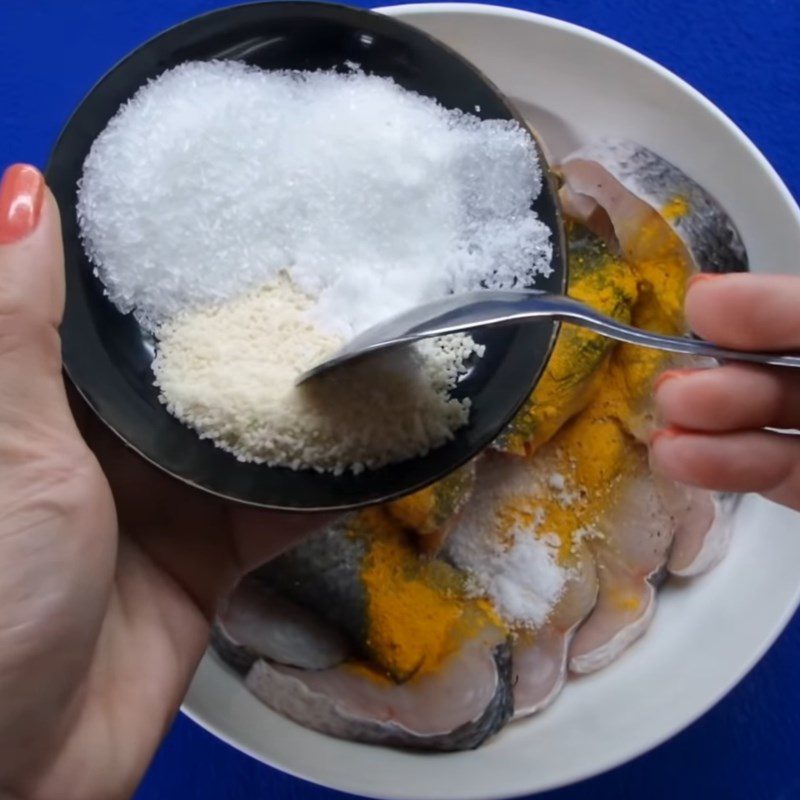
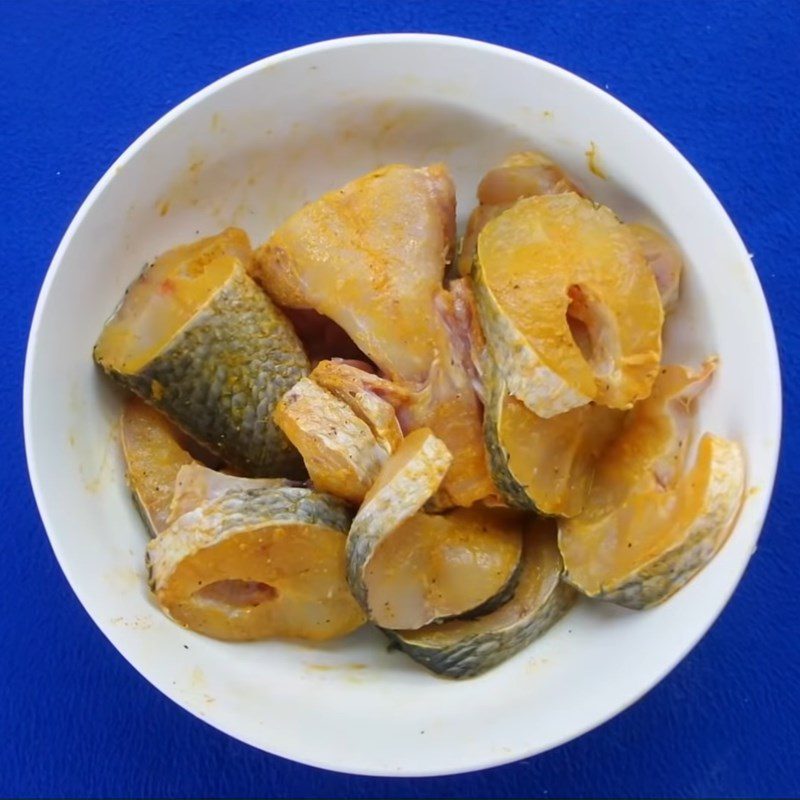
-
Prepare other ingredients
Place a pot of water on the stove, boil it, then add the bone to blanch for 2 – 3 minutes, then rinse clean with water.
Cut the green beans in half lengthwise. Next, place another pot of water on the stove, bring it to a boil, then add the green beans and blanch for 2 – 3 minutes. Then, remove the beans and place them in a bowl of cold water.
Tip:
- To help the beans retain their beautiful green color, add a little salt while boiling them.
- Avoid boiling the beans for too long as it will cause them to lose their crispness.
Chives are cut keeping the root part, while the leaves are chopped finely along with the chili peppers.
Vietnamese mugwort and turmeric are cut into small pieces and then crushed. Add about 5 tablespoons of filtered water, stir well, and then pour the mixture through a sieve to extract the liquid, discarding the solid remains of the mugwort and turmeric.
Note: Vietnamese mugwort is an essential spice to create the distinct flavor for Western-style fish noodle soup. The mugwort root is long, pale yellow, and resembles turmeric or ginger.

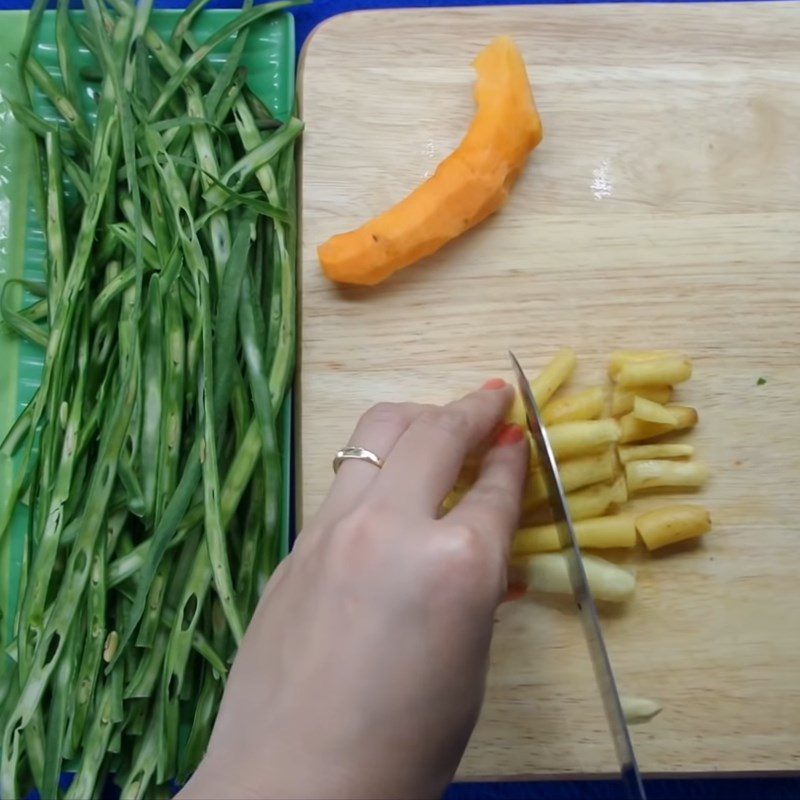


-
Cook the broth
Put another pot with 2 liters of water on the stove. Add the cleaned bone marrow and simmer for 1 hour.
Next, add the filtered mugwort and turmeric liquid from above, seasoning with 1 tablespoon of shrimp paste, 1 tablespoon of sugar, 2 teaspoons of monosodium glutamate, 2 teaspoons of seasoning powder, and 1 teaspoon of salt.


-
Frying Fish
Place a pan on the stove, add 3 tablespoons of cooking oil to the pan. Wait for the oil to heat up, then add the fish and fry over medium heat until the fish turns slightly yellow.
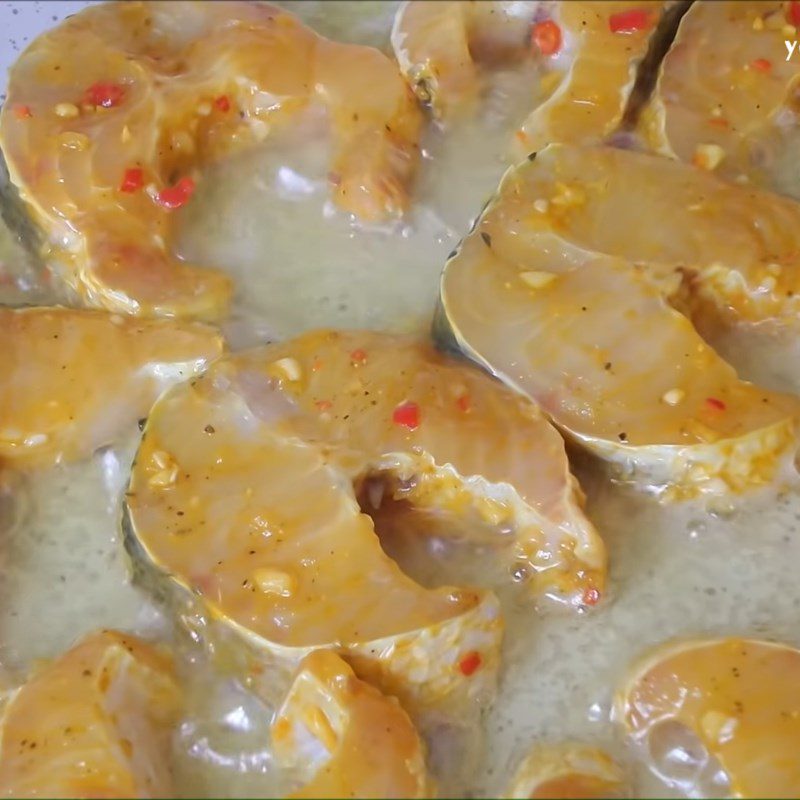
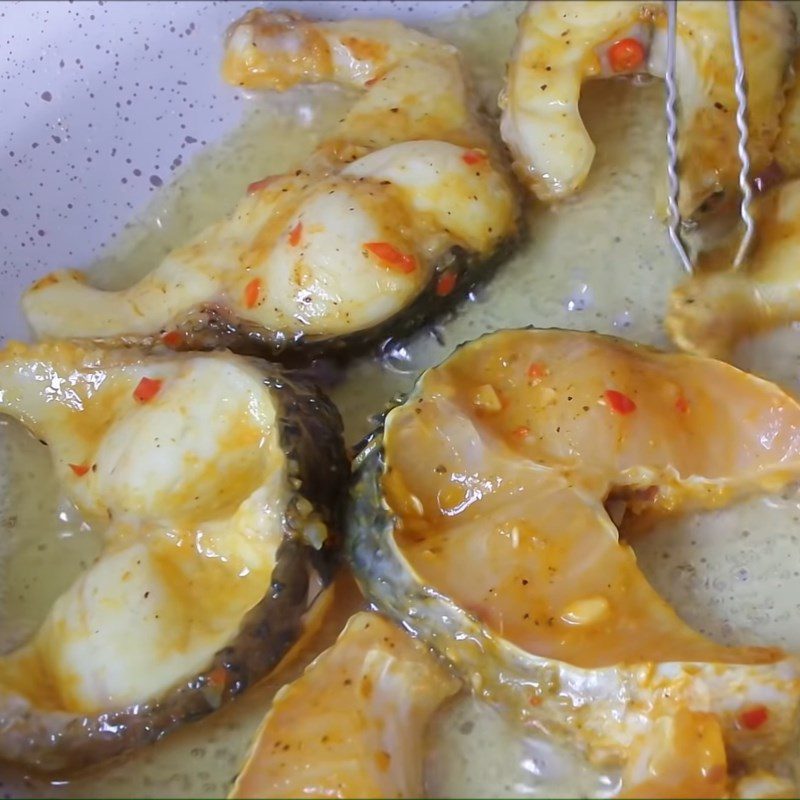
-
Blanching Noodles and Making Dipping Sauce
Prepare a pot of boiling water, add the noodles and blanch them for 2 – 3 minutes. Then take the noodles out and let them drain.
To prepare the dipping sauce, you add 50g of tamarind paste into a bowl and then add 4 tablespoons of water, using a spoon to mash the tamarind to filter out the seeds.
Next, add 2 tablespoons of sugar, 2 tablespoons of fish sauce, along with 1 teaspoon of minced garlic and 1/2 teaspoon of minced chili. Stir well and adjust the sour, salty, and sweet taste to your liking.
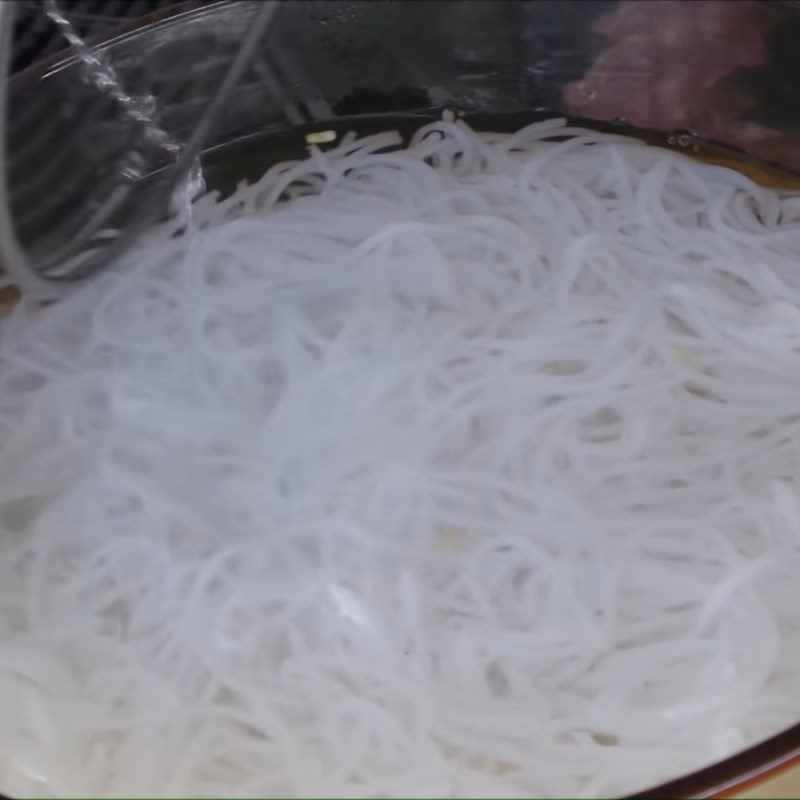

-
Completion
After cooking the broth for more than 1 hour, add the fried fish along with the green onion roots and cook for another 10 minutes. At this point, you can season to your taste.
Add bean sprouts, long beans, and noodles to a bowl. Place the fish on top and then pour the broth over. Garnish the noodle bowl with a little chopped green onion, small sliced chili, and a sprinkle of pepper.
And the dish is ready, let’s enjoy!
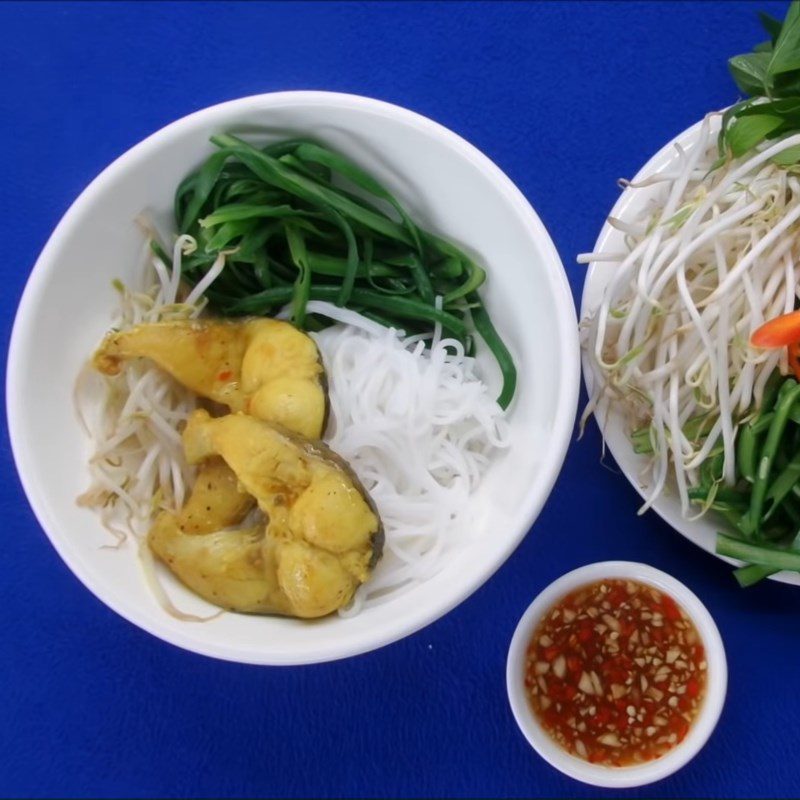
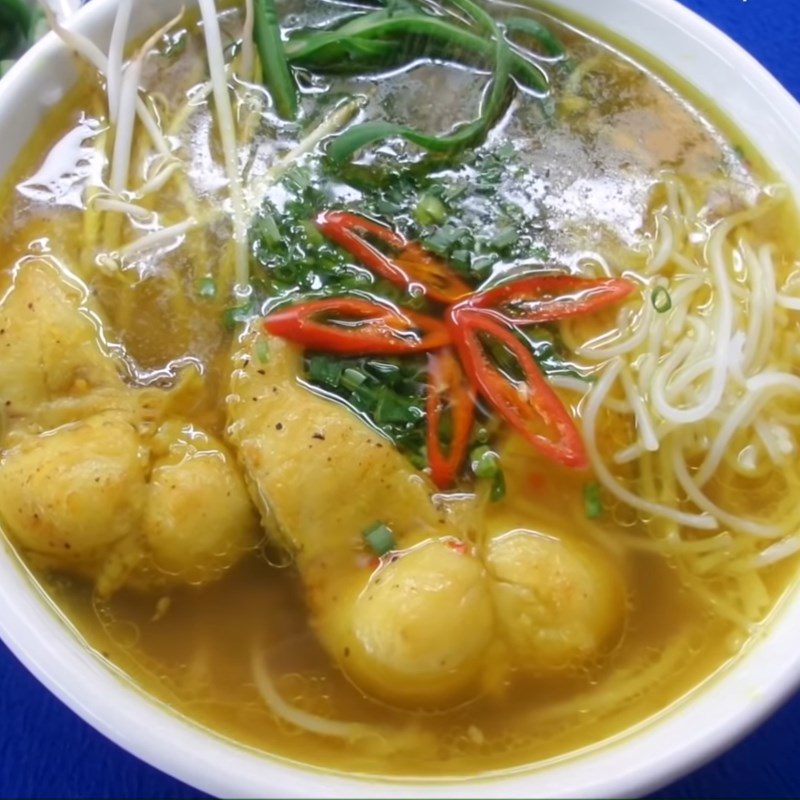
-
Final Product
A bowl of hot and fragrant snakehead fish noodle, just smelling it is already very stimulating.
The broth is sweet and aromatic. The noodles are soft and chewy, the green beans are crunchy combined with each piece of soft and sweet fish, dipped in the sour and sweet fish sauce. A lot of flavors come together in one dish, creating a wonderfully delicious snakehead fish noodle.
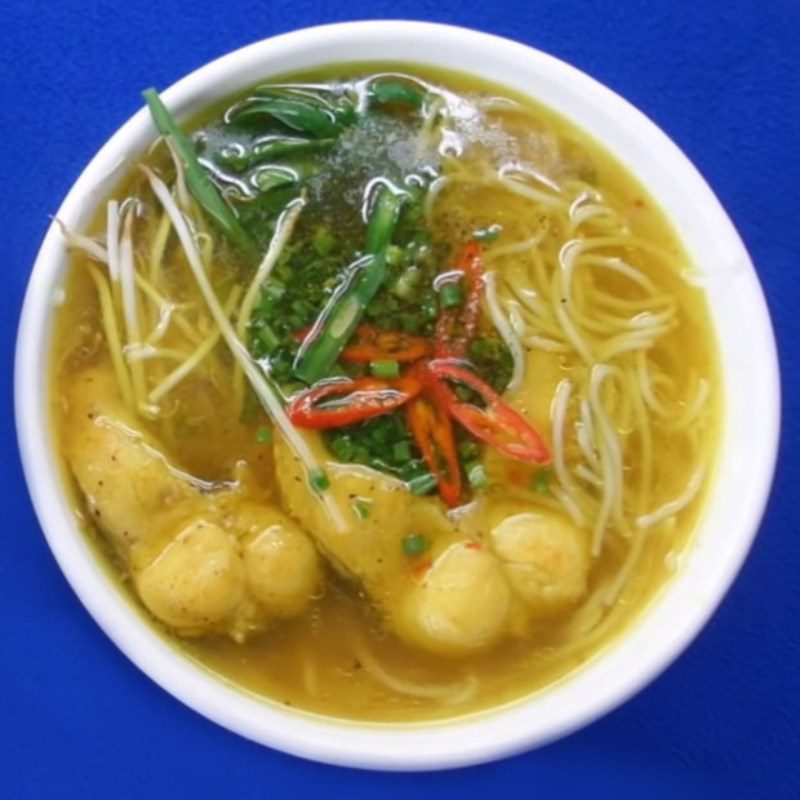
2. Fresh Shrimp Snakehead Fish Noodle
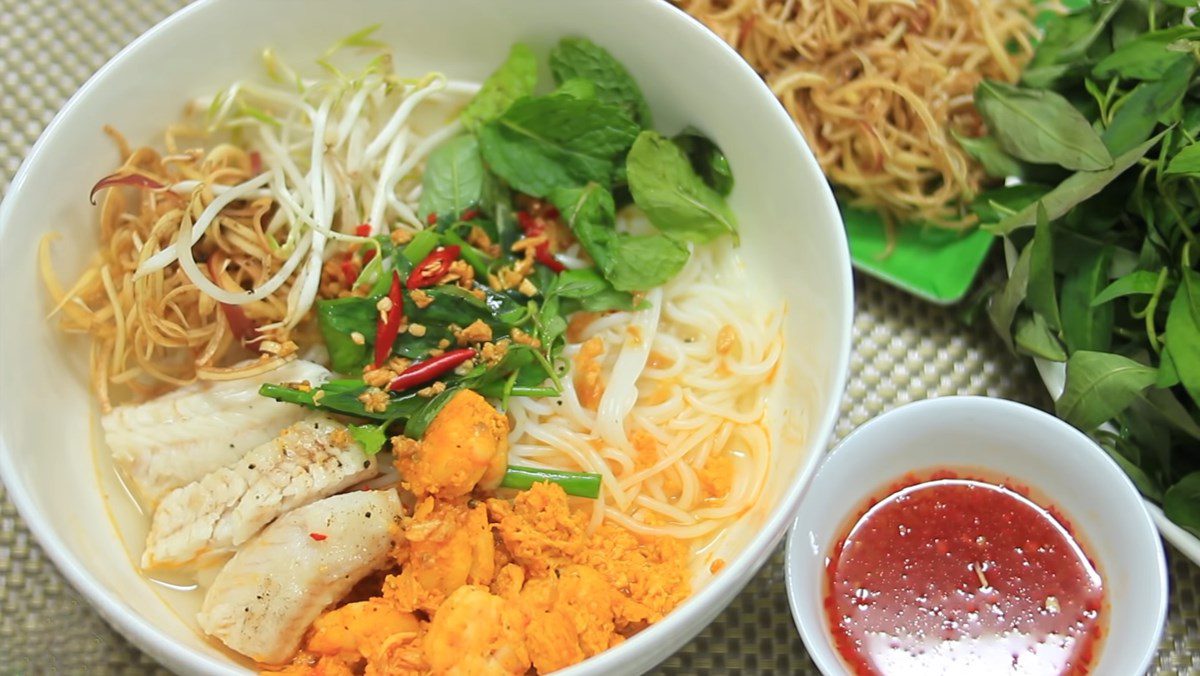
-
Preparation
25 minutes
-
Cooking
15 minutes
-
Difficulty
Easy
Ingredients for Fresh Shrimp Snakehead Fish Noodle Serves 3 people
Noodles 500 gr Snakehead fish 600 gr Fresh shrimp 200 gr (type according to preference) Pork bones 300 gr Green onions 3 sprigs Lime 1/2 fruit Duck eggs 2 eggs Alum A little Cassava 1 tuber Minced shallots 1 tablespoon Minced garlic 2 tablespoons Accompanying vegetables A little (bean sprouts/ Vietnamese coriander/ rice paddy herb/ banana blossom) Cooking oil 4 tablespoons Annatto oil 1 tablespoon Common spices A little (salt/ sugar/ monosodium glutamate/ pepper)
How to choose fresh ingredients
How to buy fresh shrimp
- You should choose fresh shrimp with a transparent shell that still has a slight smell of seawater, not fishy; do not buy shrimp that have dark patches or inconsistent colors.
- Fresh shrimp usually have their tails curled together. If the shrimp’s tail is spread out, it has likely been pumped with chemicals or injected with water to make it look plump.
- Fresh shrimp typically have their legs firmly attached to the body, so if you see shrimp legs that have turned black, you should not buy them.
See details: How to buy fresh shrimp
How to choose fresh cassava
- Choose cassava roots that are firm and symmetrical, with smooth and thin skin; this means the root will be sweet and fragrant, with a lot of moisture.
- Those with rough, bumpy skin are usually dry and less sweet, so you should not buy them.
- When choosing cassava, it’s not important whether the root is big or small, but you should select roots with small stems. The smaller the stem, the less fibrous the cassava, making it tastier.
-800x450-2.jpg)
How to make Fresh Snakehead Fish Noodle Soup with Shrimp
-
Preparation and marinating the snakehead fish
After buying the snakehead fish, rinse it briefly, scrape off the scales, and remove the internal organs. Then, use coarse salt to rub the entire body of the fish to reduce its sliminess, rinse again with clean water, and cut into bite-sized pieces.
Next, add 1 teaspoon of salt, 1/2 teaspoon of monosodium glutamate, and 1/4 teaspoon of ground pepper to the fish and marinate for 10 minutes to allow the fish to absorb the flavors.
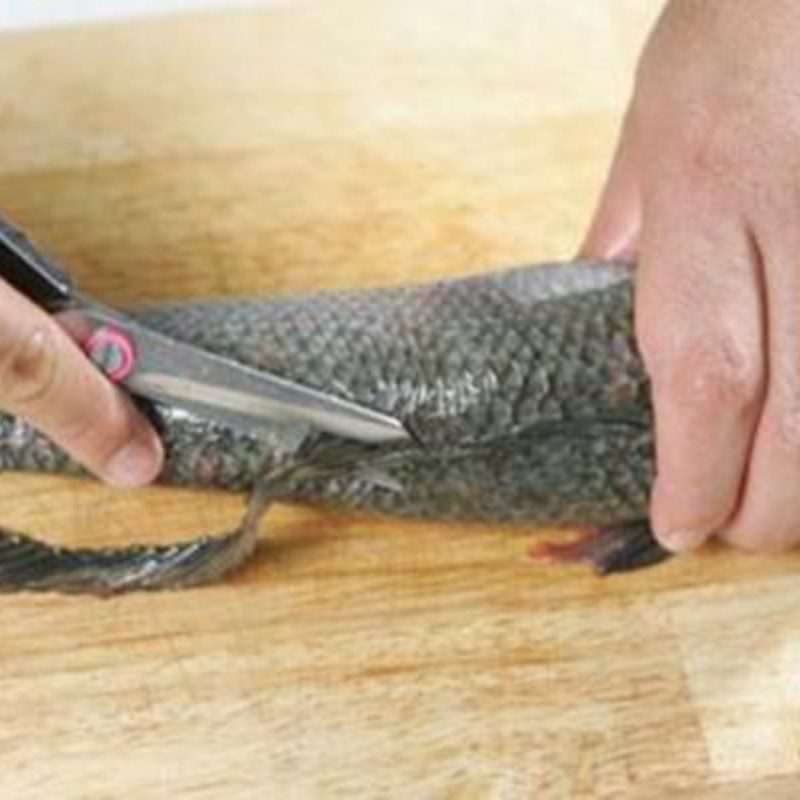
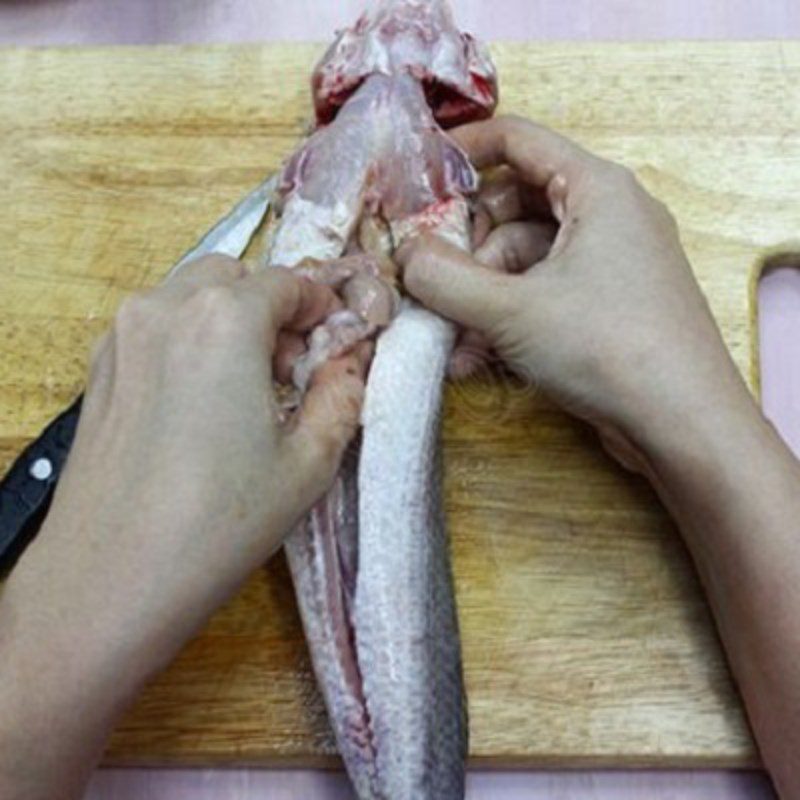

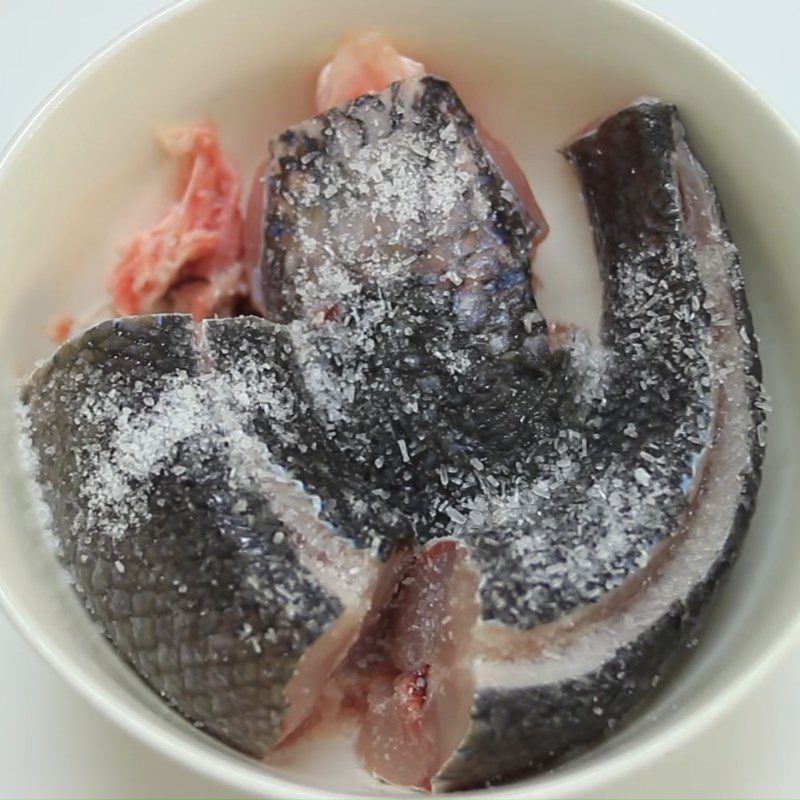
-
Prepare other ingredients
Next, peel the shrimp and remove the sand vein on the back, then wash thoroughly with water. After that, put the shrimp in a bowl and add 1 teaspoon of sugar, 1/2 teaspoon of salt, and 1/2 teaspoon of ground pepper. Mix well and marinate for 10 minutes for the shrimp to absorb the seasoning.
The pork bones you bought should be washed clean with salted water, then put into boiling water and blanch for 2 – 3 minutes, then wash again with water.
Peel the cassava, wash it clean, and cut it into bite-sized pieces.
Keep the roots of the green onions, and cut the leaves into pieces.
For the accompanying vegetables (banana flower, bean sprouts, Vietnamese coriander, cilantro), prepare them according to each type, then wash thoroughly with salted water and drain.

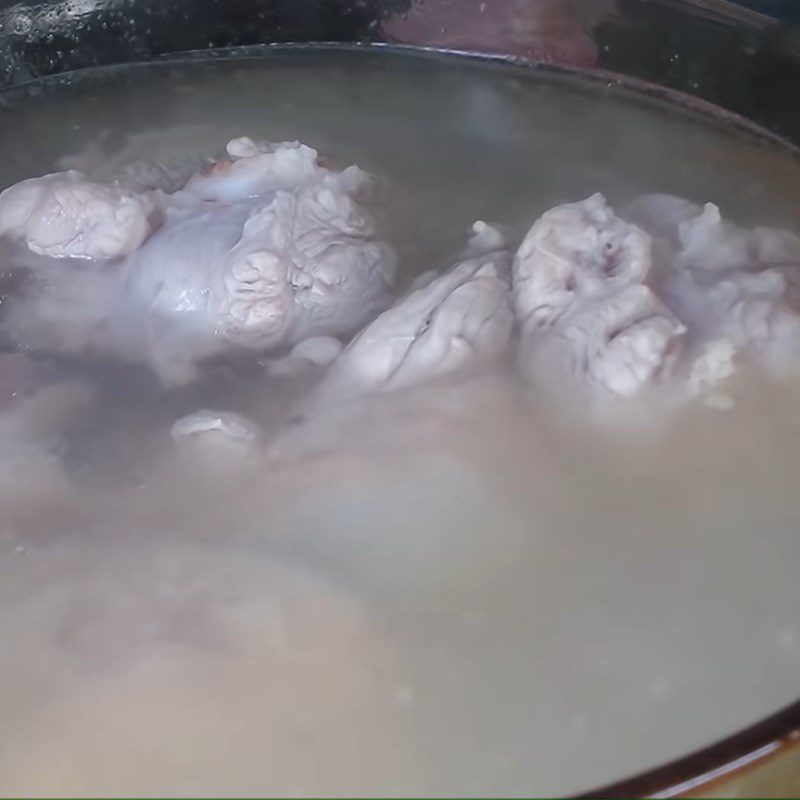

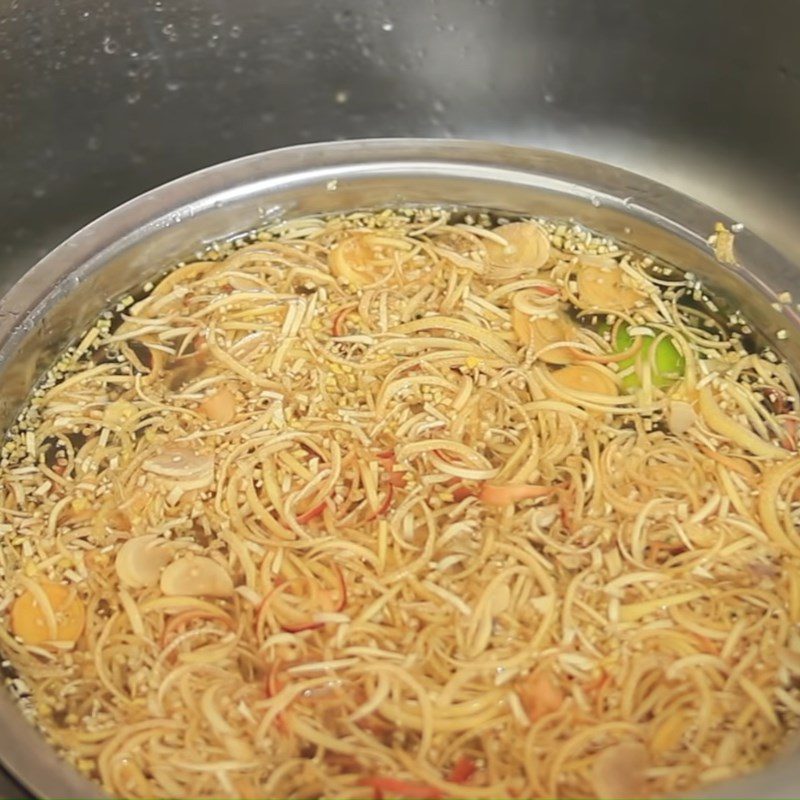
-
Cooking the broth
Take 2.5 liters of water and put it in a pot, then place the pot on the stove. Add the pork bones and simmer for 15 minutes. After that, open the pot lid and skim off the foam, then add the fish, cassava, and green onion tops to simmer for another 10 minutes until the fish is cooked.
After about 10 minutes, remove the fish from the pot.
Next, season the broth with 2 tablespoons of sugar, 1 teaspoon of salt, 1/2 teaspoon of ground pepper, and chopped green onions.
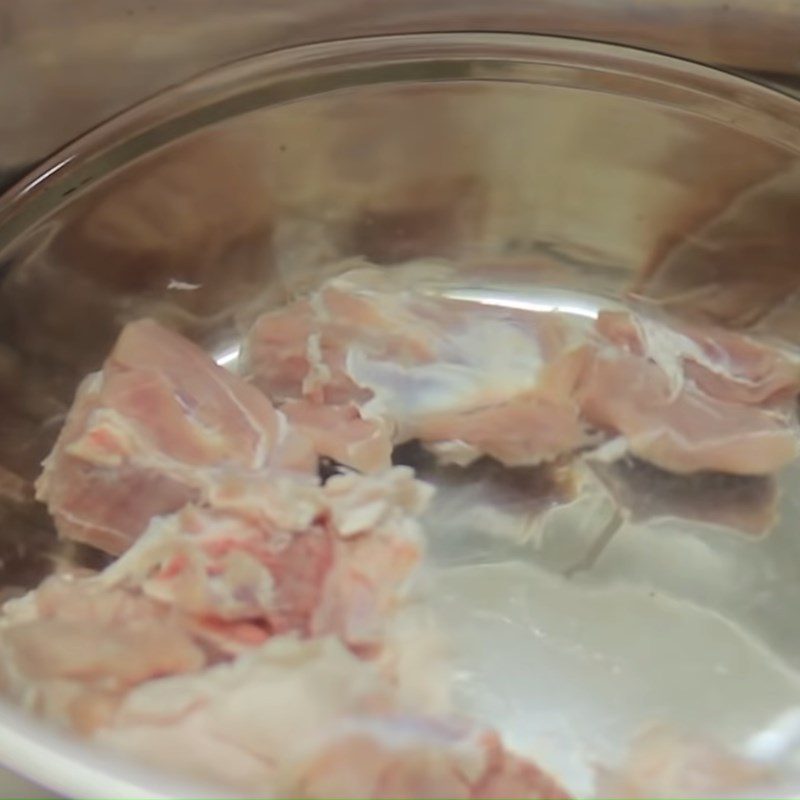


-
Removing fish meat and stir-frying shrimp
After removing the snakehead fish from the pot and letting it cool slightly, separate the fish meat from the skin and bones, then cut it into small pieces.
Next, place a pan on the stove and add 4 tablespoons of cooking oil. Wait for the oil to heat up, then add 1 tablespoon of minced garlic and sauté until the garlic is golden and fragrant, then transfer all the sautéed garlic to a bowl.
In the same pan, add 2 tablespoons of annatto oil, wait for the oil to heat, then add the remaining 1 tablespoon of minced garlic along with 1 tablespoon of minced shallots.
Sauté until the garlic is fragrant, then add the shrimp and stir-fry over high heat for 2 – 3 minutes until the shrimp starts to firm up, then crack in 2 duck eggs. Stir the shrimp and egg mixture for another 2 – 3 minutes, then turn off the heat.
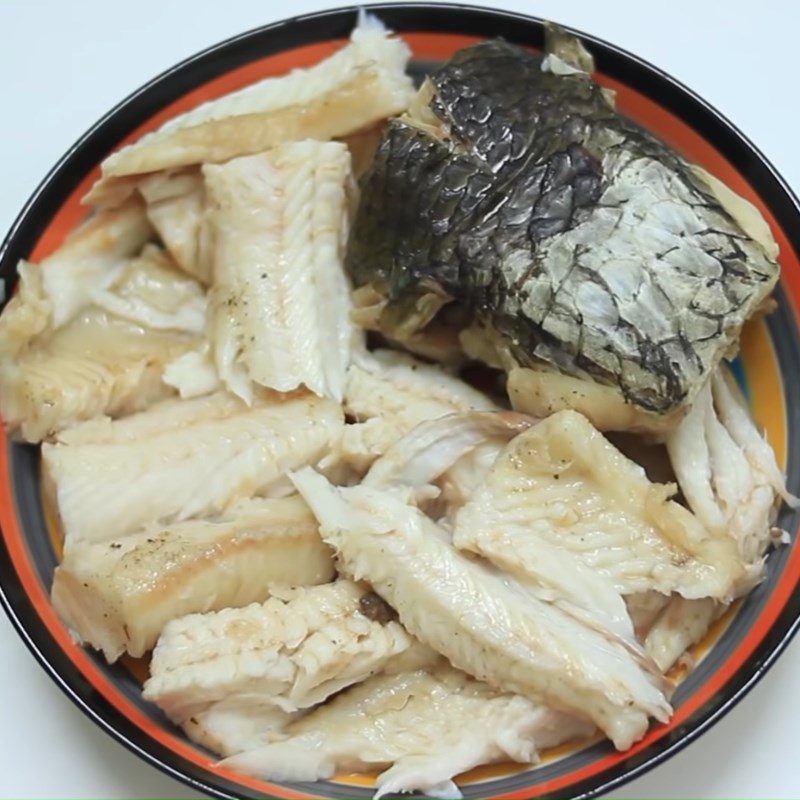



-
Completion
Put the noodles in a bowl, then arrange the stir-fried fish and shrimp along with various accompanying vegetables on top. Garnish with a little green onion and fried garlic. Finally, pour the broth into the bowl, sprinkle a little pepper, and get ready to enjoy!

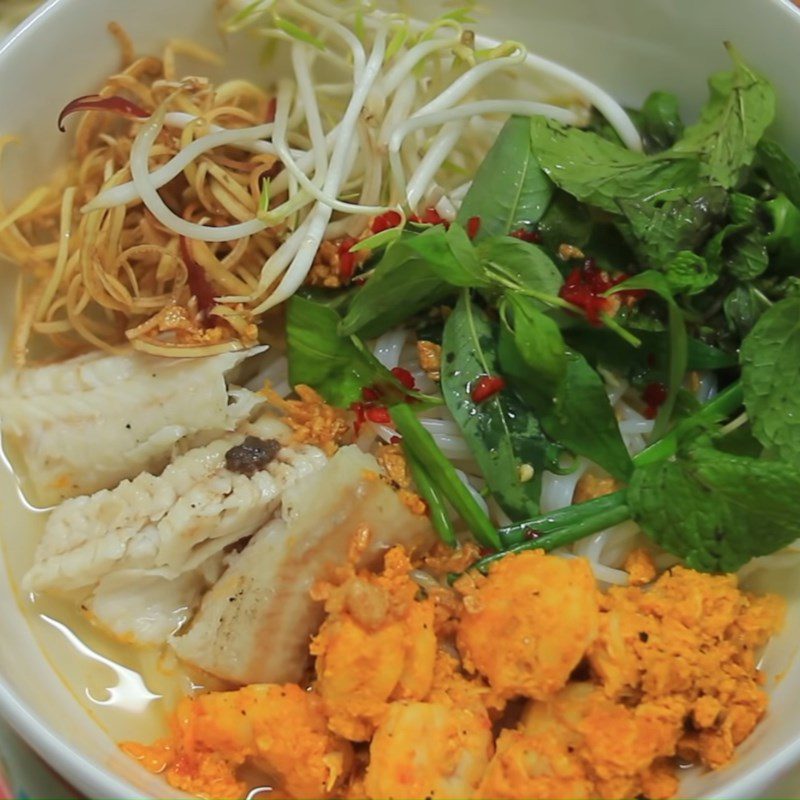
-
Final Product
The dish of fresh snakehead fish noodles looks really delicious and attractive. The broth is sweet and light, combined with chewy noodles and tender, fatty fish pieces. Eating it with various vegetables and a bowl of spicy chili sauce is truly wonderful. This will definitely be a delightful dish that you can’t resist!

How to choose fresh and delicious snakehead fish
- To buy good fish, it is best to purchase during the fish harvesting season. Prioritize buying from familiar places, at markets or reputable food stores, or large supermarkets.
- Good snakehead fish usually have a moderate size, not too big or too small. The fish body is elongated, not too round, and feels firm to the touch, not mushy.
- Additionally, you can observe the fish’s anus to determine if it is still fresh. Fresh fish have a small anus; if it is enlarged, it indicates that the fish has died, is about to go bad, and may sometimes have been treated with chemicals.
See details: How to choose fresh and delicious snakehead fish
How to choose fresh and delicious pork bones
- Delicious pork bones usually have a bright red color, are not pale, and do not have any strange smell.
- Choose bones that are about the size of 2 – 3 finger joints; if they are from a sow, they will be tastier.
- Avoid choosing bones that are too small as they are from young pigs or are small pieces, which are less sweet and not tasty.
How to clean snakehead fish properly, without a fishy smell
- During the cleaning process, you can use familiar and easily accessible ingredients to clean the snakehead fish while eliminating its fishy smell.
- Salt: Use salt to scrub and gently massage the fish for about 2 – 3 minutes. Then rinse with clean water.
- Lemon or vinegar and warm water: Soak the cleaned fish in a mixture of lemon juice or vinegar with warm water for 3 – 5 minutes. Then massage the entire body of the fish again and rinse with clean water.
- Betel lime: Take a little betel lime and apply it to the fish’s skin, then use banana leaves to scrub vigorously; the fish slime will come off with the banana leaves, while also eliminating the fishy smell.
- Kitchen ash: Put some kitchen ash in the palm of your hand and rub it all over the fish’s body. After that, use your hands to wipe off the ash and rinse again with clean water.
- Rice washing water: After cleaning the fish, soak it in rice washing water mixed with a little salt for 15 – 20 minutes, then rinse clean with water.
- White wine: Marinate the cleaned fish with white wine for 2 – 5 minutes. Then rinse with clean water.
See more:
Above is a detailed guide on 2 ways to make delicious southern snakehead fish noodle soup that is flavorful, rich, and extremely easy to make. Hopefully, with the recipe shared by TasteVN, you will successfully create this dish and enjoy some truly delicious meals!
*Refer to the source of the recipe and images from the YouTube channel Delicious Dishes and What to Eat Here?
